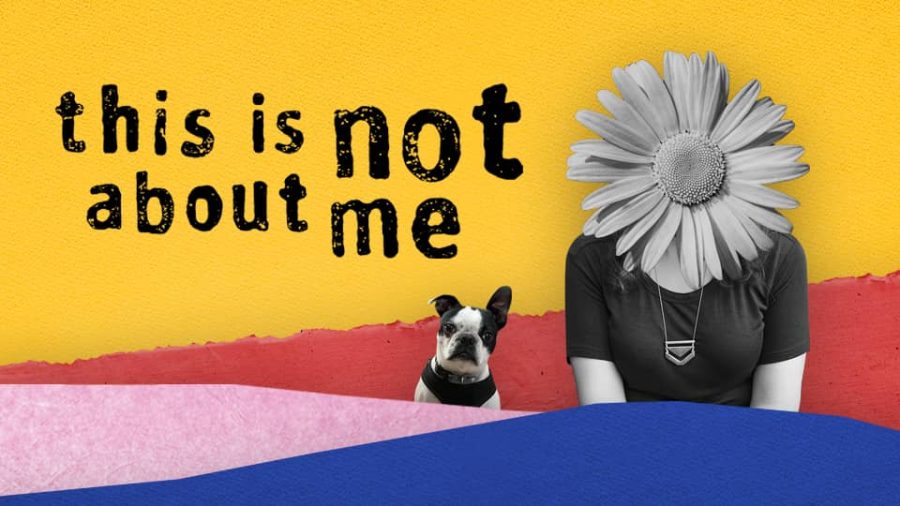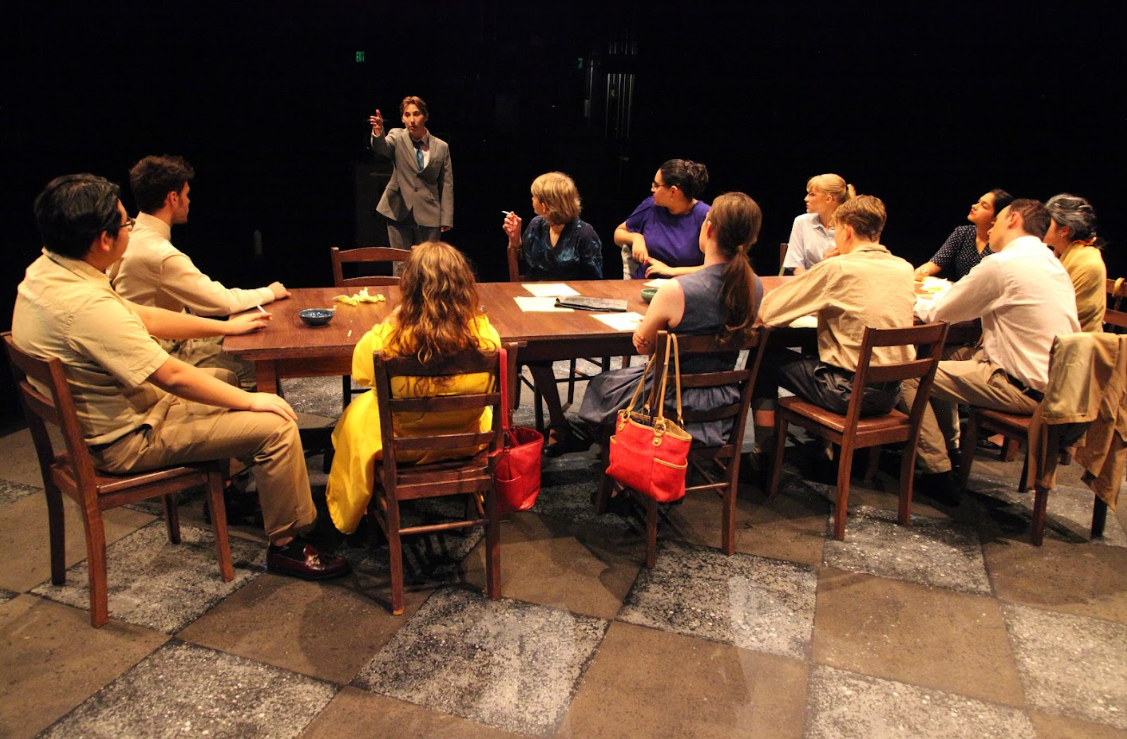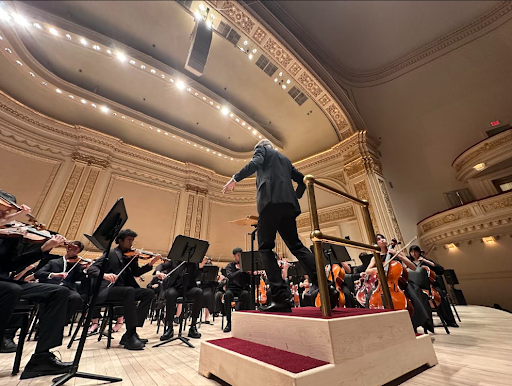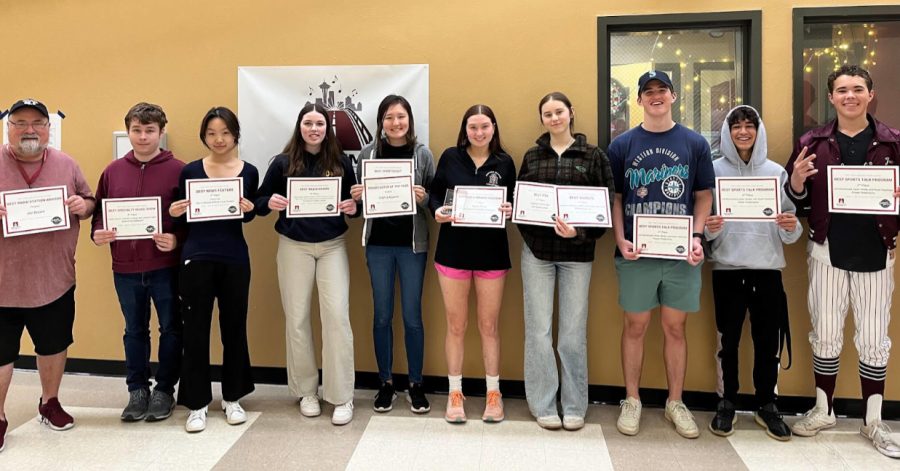“The single biggest problem in communication is the illusion that it has taken place.”
—G.B. Shaw
Jordyn Zimmerman, 26, may not be a household name to many in Mercer Island, but she is the creator and subject of a new documentary called “This Is Not About Me.” This powerful film observes the all-too-common educational experience of students with communication disabilities in our nation’s K-12 systems.
What immediately distinguishes Zimmerman is that she identifies as a non-speaking autistic, and, like me, she communicates with an iPad using text-to-speech. In addition, she is a bold disability advocate with a Bachelor’s degree in Education Policy from Ohio University and a Master’s of Education from Boston College. This level of education is a feat non-speaking autistic students rarely achieve.
What might be even more surprising is that she did not have access to general education and robust AAC (Augmentative and Alternative Communication) until she was 18-years old. As a result, her film is particularly astute at drawing attention to the inequity of education when the complexity of communication challenges gets layered with profound biases and painful misunderstandings about student potential.
On a personal level, I, too, have navigated public high school without the ability to speak orally. Disability advocacy work for non-speakers is my passion, and I feel the weight to elevate this discussion for my community. I am lucky to work as an Advisory Council member at CommunicationFIRST, a national, DC-based organization focused on communication rights, where Jordyn Zimmerman is also a board member. I have been a national TASH Communication Access Workgroup member for four years, and I’m currently co-designing a course for communication classroom support considerations with NYU’s Program for Inclusion and Neurodiversity Education (PINE). Jordyn and I first worked together on the award-winning short film “LISTEN.”
The impact of Zimmerman’s latest film will be different depending on your perspective, so I want to share from the lens of what I would like peers, parents, and educators to notice. Non-speakers have been waiting for a story like “This Is Not About Me.” Living with a communication disability is torturous in K-12 schools.
Kind people are everywhere, but the odds of making it through educational settings without experiencing repetitive traumatizing situations are low. Learning requires communication at every turn. When you can’t do it like most others, the barriers to being seen as a competent student are almost insurmountable. Moreover, when frustration about the resulting social injustice boils over in an autistic person, prompting an outburst, society’s implicit bias toward underestimating disability could prevent educators from seeing the more complex root cause.
Instead, the knee-jerk reaction may focus on remediating the student’s “behaviors” by taking away the things they enjoy, ignoring their signals of distress, or restraining their bodies into compliance. These responses miss the systemic equity problems. I know from my own experience that living this way, day after day, can create toxic stress.
Viewing this documentary may require some additional background for lay people. Students with autism vary in their ability to communicate. Nobody knows what causes difficulties with communication in autism. There is often an assumption that language and social understanding are absent. However, apraxia, a common co-occurring condition, can affect an individual’s ability to plan and sequence the mouth and tongue movements needed to speak, in addition to the hand and eye movements required to point and use assistive technology effectively.
Autistic people move and sense differently, and research around the impact of stress is beginning to help us understand why some approaches may compound the problems faced by students with autism and communication disabilities.
Experts estimate that over one-third of the autism population is either minimally speaking, unreliably speaking, or non-speaking. According to statistics published by the National Center and State Collaborative (NCSC) and the National Center for Educational Outcomes (NCOE), students who begin school with a communication disability often enter K-12, navigate through their entire education, and exit into adulthood without ever acquiring an effective means of communication to participate fully in education, community, and employment opportunities. This cycle needs to stop.
In this film, Zimmerman expertly crafts a powerful narrative by sharing glimpses of her life of misunderstanding and despair in schools. The film opens with Zimmerman’s grade-school teacher sharing, “She was probably one of the most challenging children I’ve ever worked with.”
Meeting Zimmerman today, one might think she just grew out of her rebellious stage. She is almost always smiling and very conversational with her AAC device, even joking about her past. It’s hard to imagine her as a problem student. Every aspect of the film shares more details about how this disparity of perception occurred. “I think it was the severity of my behaviors that led educators to not see my potential,” Zimmerman said.
The film deliberately shows the contrasting moods between her prior school settings and the more supportive settings where she thrived. Somber background music and expressionless faces dominate when she takes director Marco Niemeijer on a tour of her elementary school. Referring to her time in middle school, Zimmerman’s mom notes, “They were restraining her more and more for less and less.”
At home, in her community, and on her college campuses, Zimmerman appears open and natural. My favorite scene is in a grocery store, as she casually chats with her mom but stops to straighten some jars on shelves. I recognized it was a need for her to do so, and I felt it too. It was over in a second, and she moved on. Most who view the movie probably won’t even take note of this incident.
Later, consecutive images of her official school files from Kindergarten through grade nine flash on the screen. The writing style is cold and matter-of-fact, rather than showing empathy or curiosity. Loud mechanical typing sounds punctuate the black and white viewpoint by typing the words “tantrums,” “difficulty calming self,” “headbanging,”frequent screaming,” “cowering under furniture” and “running out of the building.” The use of these phrases is apt way of showing how assumptions led teachers and therapists to see her as an inadequate learner.
I am triggered by reading the judgemental documents on the screen, so I can understand her rage in living it daily. The assignment of blame was squarely on Zimmerman without reflection that other people lacked the empathy and skills to support her need for safety and connection.
Severe coping strategies, like the ones Jordyn exhibited, often emerge as a way to deal with stressors invisible to others. In less comfortable settings, the need to control aspects of the environment goes way up. Sensory overload can cause autistic students to get caught in unintentional loops. Soon, the true person underneath is hidden under a cycle of fight or flight episodes. A cascade of incorrect assumptions can result when misinterpreted actions are categorized as autistic behaviors rather than stress responses.
As the film progresses, it is clear that for most of her education, Zimmerman is a problem to be fixed. By the time Zimmerman entered the CARES school as an 18-year-old, her teacher, Mrs. Christy LaPaglia, reported, “She didn’t trust anybody,” and “she spent many hours underneath my desk.” Instead of establishing more demands, her new teacher asked, “How can I help?”
From there, Zimmerman’s hero’s journey begins; she finds a teacher willing to imagine what it feels like to be a student everyone has given up on. This teacher was willing to see through the trauma responses to the true potential underneath.
Zimmerman recently took questions about the film. During a Q and A with fellow AAC users, she was asked, “The title of your film, ‘This Is Not About Me,’ is extremely powerful…Can you say why you felt it was important to use those simple, five words, in an auditorium filled with teachers?”
“My story is so much larger than just me. My experiences are shared by many other individuals who use AAC, who would benefit from the use of AAC, or who have faced any difficulties in their journey to obtain an education,” Zimmerman replied. “Those simple words I shared were a guide for helping educators examine my story but also dive deeper when reflecting on the students in their lives.”
Zimmerman adds that her intent was also to highlight the issue of restraint and seclusion, which is disproportionately applied to non-speaking students. Lastly, she touts the need to reflect on professional biases and asks educators to presume students have the potential to learn, which was a nod to researcher Anne Donnellan’s historic 1984 paper entitled, “The criterion of the least dangerous assumption.”
Adult autistic advocates share invaluable information about their similar experiences, but younger students may not have access to this mentorship. What if nobody told you that plenty of other people struggle with the humming and flashing of fluorescent lights, with the movement of other students in a classroom, with the bombardment of noise from every direction, or that the stern tone of a teacher’s voice can cause your heart to race? How might that lack of information affect your mental health?
Now, imagine you use a form of communication that nobody else uses. Sometimes, staff might even talk about you as if you are not there. You may be left out of most peer social conversations going on around you. Phrases used commonly when addressing people with perceived intellectual disabilities like “Hey, buddy” and “Good job!” remind you daily that others see you differently or as lesser.
The average person speaks at about 150 words per minute, but the most proficient adult AAC users create messages at rates between 10 to 30 wpm. It takes time to build the confidence needed to let others know that you understand more than you can show. Simultaneously, educators should know that attempting communication repair alone is a laborious and risky task when you need to type out everything. At what point might it seem reasonable to become frustrated and lash out?
As a younger student, I felt the same anguish at hearing educators’ thoughts about my aptitude or potential. When I think about Jordyn and thousands of other kids, a thought comes to mind. When mindsets shift from assumptions to support, the effect can look like magic. I know I am much better at staying regulated the more I feel heard and respected, so that may be the simple shift that should happen first.
Traditional schools also need to become more accessible, and better at shedding ableist practices, so those of us navigating a lifelong disability are not shamed into thinking we don’t deserve equity.
If I have any complaints about the film, it is that I worry some viewers might oversimplify the message down to just a need to provide more technology. Someone without a history of marginalization might think this film is about supplying iPads to non-speaking autistic students, but nothing could be further from the truth.
Over a Zoom meeting, I asked Zimmerman a more pointed question to clarify her intent: “What do you think about this assumption that providing access to technology will be enough to prevent frustration and trauma?”
“Giving a student an iPad (or any communication support) does not fix the systemic issues in our schools, which are often the root causes of trauma,” Zimmerman said. “Alternative and Augmentative Communication supports such as iPads, paired with explicit instruction, may help a student explain their frustration before a problem arises or gets bigger, but technology alone does not improve student outcomes.”
As a non-speaking person, this is the takeaway I care about most. The fact is that something as simple as the “Golden Rule” applies here. The best intervention and intentions can still be harmful if implemented without constant reflection about what it feels like to be on the receiving end of that interaction.
When supporting a student with communication challenges, the ultimate inclusionary, trauma-informed practice may be to remain curious, apologize often, and never stop creating opportunities for safety and connection.
In just under one hour, “This Is Not About Me” packs a profound plea to rethink support of minimally, unreliably, and non-speaking students. I highly recommend the film.
A toolkit with additional information can be found here.














Jordan • Feb 27, 2022 at 10:39 pm
Hey Grant- amazing job on this article. As a student who would has what would be considered ‘normal’ speaking and communication abilities according to societal standards, I found it really interesting to read about the challenges faced by the community of people with communication challenges, especially within the education system. You did an amazing job tying in your personal narrative with the overall experiences of non-speaking students/students using AAC/students with communication disabilities as a whole, as well as comparing those experiences to the overarching story of the film. As somebody who is constantly attempting to educate herself on the variety of different human experiences, specifically concerning communities that face unjust discrimination, stereotyping, and misunderstandings, this article provided a fascinating perspective and insight into some of the injustices that students with communication disabilities face, and a wake-up call to me personally to continue educating myself as to how I can be a better ally for this community specifically. Thank you so much for writing this Grant- this article was truly eye-opening.
Emerson Freeman • Feb 18, 2022 at 4:45 pm
Along with verbal autistic people, it’s also very important to hear the voices of autistic people who are semi-verbal and non-verbal. The system dehumanizes us and thinks of us as lesser than neurotypical people because don’t take us seriously. They only see the negative qualities in autistic people.
I was in a special education program throughout elementary school. I remember witnessing things that were described in the article and it was very traumatizing to remember it now.
Katie Friedman • Feb 17, 2022 at 8:35 pm
Not only did I learn so much about the daily struggles of minimally, unreliably, and non-speaking students from this article, I am also so excited to watch Zimmerman’s film and continue to expand my knowledge and awareness of the topic because of it. I am so proud of and thankful for people like Grant and Jordyn who are advocating for themselves as well as people who are less or completely unable to do so for themselves!